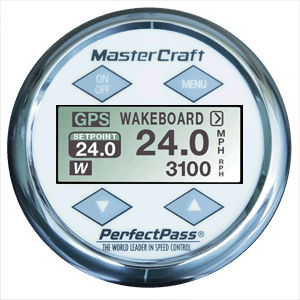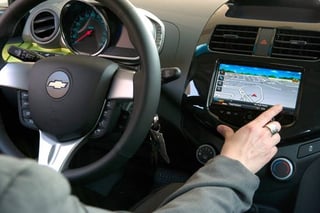Determining when you should take the custom route for your LCD displays can be a challenge. Once you dispel the most common misconception that a custom display leads to higher unit price, the analysis becomes much simpler.
Typically, any product running more than about 3,000 parts per year will have the opportunity for system level net advantage by implementing a custom or semi-custom LCD display over a standard product. There is almost always an integration improvement found when an LCD display engineer is directly involved, and is able to help with the integration design process. The improvement is even more dramatic when the display needs are unique, and the available standard products are not that close.
Why 3,000 units per year? This is typically the low end of the volume threshold where the unit costs will be as good as or better than the comparable standard product. Below the 3,000 piece volume rate, the cost of the custom unique configuration may exceed the comparable standard product, but still may be necessary if the design dictates the custom route.

What are the Benefits?
There are four primary advantages of implementing a custom display.
- Lower LCD display unit cost
- Improved LCD integration
- Optimized display performance
- Lower System Level costs
Lower LCD display unit cost
A custom LCD display results in a lower unit cost because only the necessary features are included. Instead of filling displays with the standard features or sizes that don’t perfectly match your specifications, you include only exactly what you need. The size of the custom display is no larger than what’s needed, which reduces material requirements. These factors naturally lead to a lower per-unit LCD display cost.
Improved LCD integration
With a custom LCD design, the display is designed together in harmony with the end product for a perfect fit and ease of assembly. With the improved LCD integration, you lower assembly costs and eliminate redundant components (e.g., connectors). And additionally, you can achieve a higher level of quality from the more highly integrated mechanical and electrical elements.
Optimized display performance
Beyond the cost savings, you realize optimized performance with a custom LCD display that’s designed and optimized for the exact application your end user needs. Do you need wide viewing angles or extremes temperature performance? Depending on the requirements you can either improve the end user experience, or remove performance (i.e. cost) for performance attributes that are not valued by the end user.
Areas for potential performance improvements include;
- optimizing active areas for each application;
- enhancing backlight / sunlight readability and viewing angles;
- including extended-temperature LCD fluids and heaters;
- adding strengthening cover glass for damage protection; and
- implementing optical bonding construction for increasing contrast and brightness, and reducing glare.

Lower system level costs
A customizable display configuration allows for the incorporation of additional components that might not typically be in a standard LCD display. Given your unique product, there are many components that are much more efficiently integrated into the display rather than being sourced as a separate assembly. Some of the more obvious are touch panels. There's also, buttons, keypads, LED indicators, strengthened cover glass, custom cables, connectors and mounting features. Integrating these on the display can be done much more economically than using separate unique components. Additionally, this reduces the quantity of your assembly components you're managing which lowers operational overhead and reduces the assembly time and labor. You can achieve a higher level of product reliability and product robustness from the more highly integrated system.
How Do I Go Custom?
After understanding why you would want to go the custom LCD display route, next up is gaining insight into how.
It starts with a clear understanding and definition of the product’s purpose. This means knowing your market, and determining answers to these essential questions:
- What information / content does the product need to display? (Is it text, images, both? Monochrome or color?)
- Will it also need additional content such as LED indicators?
- What type of interface will the end user have? (Touch panel with soft keys, or hard / fixed function buttons)
- What type of interface would best fit your product from an electrical and mechanical perspective?
- What physical environment will the display be operated and stored in? (Indoors, outdoors, hot, cold, humid? User distance, ambient lighting, product protection, motion component, shock / vibration)
Then it’s a matter of assessing the market and iterating the cost advantage of the product features until you’ve fully optimized the exact custom LCD display design specification. The design team would then be able to take all these discovered attributes and produce new LCD specifications ready for prototyping.

Are There Always Custom Options Available?
Once the ideal needs are adequately defined, your display partner can present you with viable options based on the features that were discovered and designed. There are some instances where there are LCD display manufacturing limitations, as well as commercial viability issues for some custom designs.
For example, color and monochrome LCDs are treated a little differently when it comes to customizing the LCD glass itself. Unlike monochrome LCD glass, color TFT LCD glass high tooling cost and high minimum order quantities are prohibitive to projects under 100,000 units per year. In most color LCD applications, you would customize the display around a standard color TFT glass size instead of fully customized the glass like you would in the monochrome LCD project.
Making Custom Less Challenging
The goal is to make this process less challenging by being aware of the benefits of custom and the subsequent steps for starting the custom design process. Being open to, and then following this process, allows the opportunity to see and compare the benefits of a custom LCD display option over a standard off the shelf display option. All too often, the misconception that a custom LCD display is a more expensive proposition, prevents the evaluation of this customization option for your design. And partnering with an LCD display manufacturer that’s experienced in producing custom LCD displays will ensure the process results in the optimal LCD solution.
Need assistance in determining whether you should go custom with your LCD displays? Let us help. Contact us.






